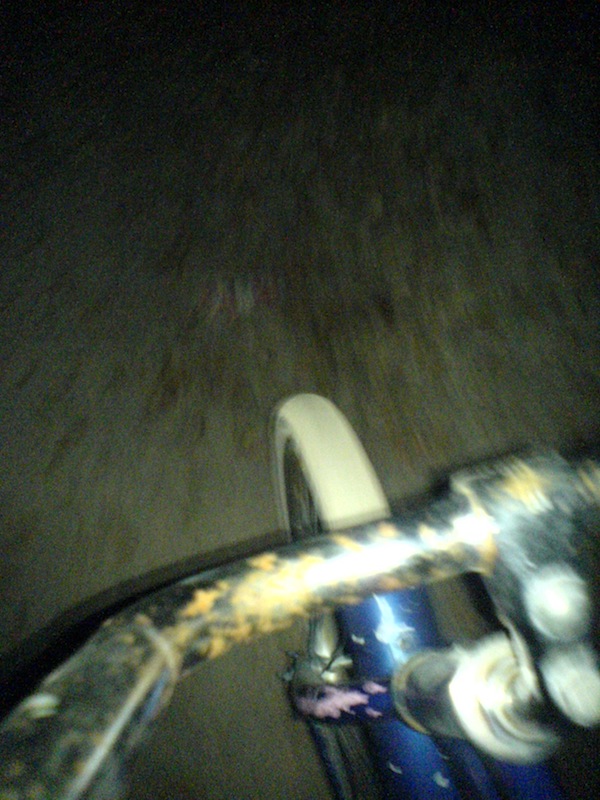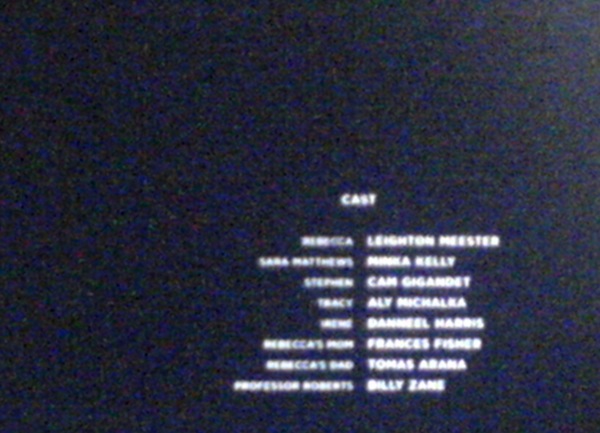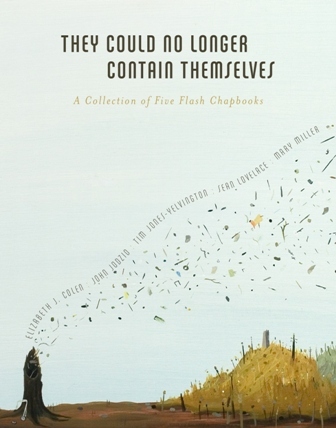Art Observed (Going Places)
This week: Always almost there. A blurry image tells more than you think. “Suggested Donation,” means never pay more than 1 cent to get into The Met. A broken toilet can still be used (just don’t flush). – TD
“Whether or not that work is deemed to be of a high quality, the activities Lin and his peers do online—hours of blogging, tweeting, commenting, and emailing—suggest that they are tirelessly working to advance their name and their art.”
At The Morning News, Daniel B. Roberts writes about Tao Lin and Muumuu House in Much Ado About Whatever.
Notes towards a suicide letter
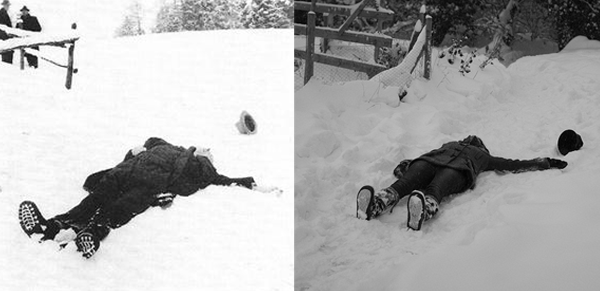
On December 25, 1956, Robert Walser died from a heart attack during a walk near the asylum where he had spent the last 23 years of his life. Cezanne is said to have died (1906) in similar fashion, during a walk, but no pictures had been taken, a painter’s ironic affront to photography perhaps. There are various angles from which a handful of pictures of Walser’s death were taken, each version collated into an incident. On December 2, 2010, a girl took a picture of herself as Walser, only the exclamation mark formed by her arm and hat were too close to each other. Things tend to roll farther when they are dropped rather than placed. Walser abruptly gave up writing in 1933, checking himself into a mental asylum, where he remained for the rest of his life. As an extension of his genius, “I am not here to write,” he said, “but to be mad.” Duchamp similarly disowned visual art — degrading it as “retinal,” a glimmer for the mere receiving lens of the eye — to move towards math and chess. These of course, are not suicides, no more than Suicide (2008), which may be read as author Edouard Levé’s (who killed himself in 2007) glorified suicide letter. He was also a painter and photographer, burning all his canvases in his early career to make mental room for photography, a photographer’s non-ironic affront to painting. Here’s the deal though: they are both rectangular windows of conceit, fake life in a box. The second-person “you” in Suicide eerily takes on the semblance of instruction, and you find yourself slowly disappearing with each page, as if the toner was running out of ink.
Things I’ve Read Lately
I’ve read some interesting books and magazines over the past couple weeks so I’m going to talk about them in one big post. Also, I’m giving several books away.
They Could No Longer Contain Themselves
I don’t care for the term flash fiction. I understand the etymology but I often think, “Why not call it a story?” There are so many terms now for different kinds of fiction. There is an obsession with naming, creating taxonomies so we can better understand the nature of a thing. Flash fiction. Very short stories. Sudden fiction. Microfiction. Nanofiction. All these terms strive to categorize the nature of stories that fous on brevity and compression. Ask five different writers how to define flash fiction and you will likely hear five different definitions. I read an article in the most recent issue of The New Yorker about tiny houses, and the writer talks about the article’s main subject, this guy named Shafer who designs tiny houses and the writer says, “What makes Shafer’s houses different from others is the classical elements of form and proportion and the graceful compression of his design.” I kept thinking about that line as I thought about the stories in They Could No Longer Contain Themselves. They each contain the classical elements of good fiction and the compression in each story is also graceful like a tiny house that holds everything you need to feel at home.
In They Could No Longer Contain Themselves, the latest book from the reliably excellent Rose Metal Press, five writers offer five unique interpretations of flash fiction in chapbooks by Mary Miller, Elizabeth J. Colen, John Jodzio, Tim Jones-Yelvington, and Sean Lovelace (I reviewed his chapbook in 2009, here).
July 25th, 2011 / 5:36 pm
Poets are the most jealous type of artist. One of the most jealous moments I’ve experienced is when I heard Heather Christle’s second book The Trees the Trees was being published by Octopus Books and her third book What is Amazing was forthcoming from Wesleyan University Press. I’d love to hear your jealous moments (bonus points for commenting under your own name).
“My Life” by Joe Wenderoth
Updated. (Sorry.)
“On Writing” Roundup
For easier access, by request, here’s a roundup of all our “On Writing” posts, with craft thoughts by:
Lynette “Squeaky” Fromme
Coco
GZA
Delonte West
Mark Rylance
Kenneth Anger
Damien Hirst
Anton LaVey
Prince
Gerhard Richter
Judy Garland
Kimora Lee
Peyton Manning
Mark David Chapman
David Tudor
Nassim Nicholas Taleb
Bill Evans
Ted Bundy
Ray Lewis
Andre Agassi
Wu-Tang
Aleister Crowley
Grace Jones
Liz Fraser
John Holmes
Floyd Mayweather
Klaus Kinski
Pier Paolo Pasolini
Ron Artest
Louise Bourgeois
Gustav Mahler
Iggy Pop
R. Kelly
Captain Beefheart
Dee Dee Ramone
Kool Keith
Mike Tyson
…
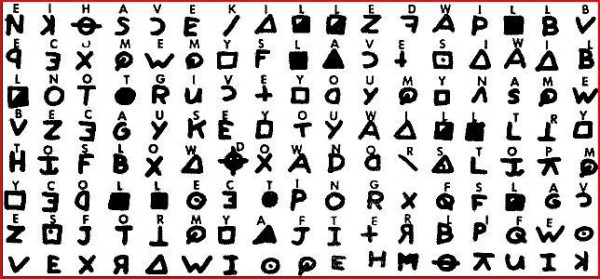
KILL/SLF/DR/HELP/ME/KILL/MYSELF/GAS/CHAMBER/AEIOUR/DAYS/QUESTIONSABLE/EVERYY/
WAKING/MOMENT/IM/ALIVE/MY/PRIDE/LOST/I/CANT/GO/ON/LIVING/IN/THIS/WAY/KILLING/
PEOPLE/I/HAV/KILLD/SO/MANY/PEOPLE/CANT/HELP/MYSELF/IM/SO/ANGRY/I/COULD/DO/
MY/THING/IM/ALONE/IN/THIS/WORLD/MY/WHOLE/LIFE/FUL/O/LIES/IM/UNABLE/TO/
STOP/BY/THE/TIME/YOU/SOLVE/THIS/I/WILL/HAV/KILLD/ELEVEN/PEOPLE/PLEASE/HELP/
Art, Crime, Beauty, Murder
To approach. To peek through. To see Marcel Duchamp’s final contribution, “Etant donnés,” is to confront the intersection of art and crime and beauty and murder.
Remember what Poe said in “The Philosophy of Composition“:
I asked myself—“Of all melancholy topics, what, according to the universal understanding of mankind, is the most melancholy?” Death—was the obvious reply. “And when,” I said, “is this most melancholy of topics most poetical?” From what I have already explained at some length, the answer, here also, is obvious—“When it most closely allies itself to Beauty: the death, then, of a beautiful woman is, unquestionably, the most poetical topic in the world.
Here is the threshold:

Here is the observer:

And here is the observed….
BEWARE…NSFW…GRAPHIC VIOLENCE…enter this post at your own risk:
Lynette “Squeaky” Fromme on Writing

“Anybody can kill anybody.”
“I do not have the answers and as a woman I do not intend to play my own thoughts over the truth. I can clearly state the problems and tell you that I suffer from them.”
“We all came from houses with doors, doors that were supposed to be closed when there were things going on that we weren’t supposed to see, and when our pants were down.”
[re: approaching Gerald Ford with an unloaded weapon] “He looked like cardboard to me… but at the same time, I had ejected the bullet in my apartment, and I used the gun as it was.”
[re: Charles Manson] “I know I laid a lot of my thinking in his mind.”
“I am co-counsel and as co-counsel I have the right to represent myself, speak for myself and conduct myself and my trial by myself in my best interests in order of due process.”
“Keep talking about moving toxic wastes, but never let it cross your mind to quit producing them.”
“People have already shown you can lay blood in front of them and they’re not, you know, they don’t think anything of it.”
“When the circumstances are right, everything becomes a dance.”
“Usually a person who does what I did doesn’t repeat it.”
“It’s in everybody.”

